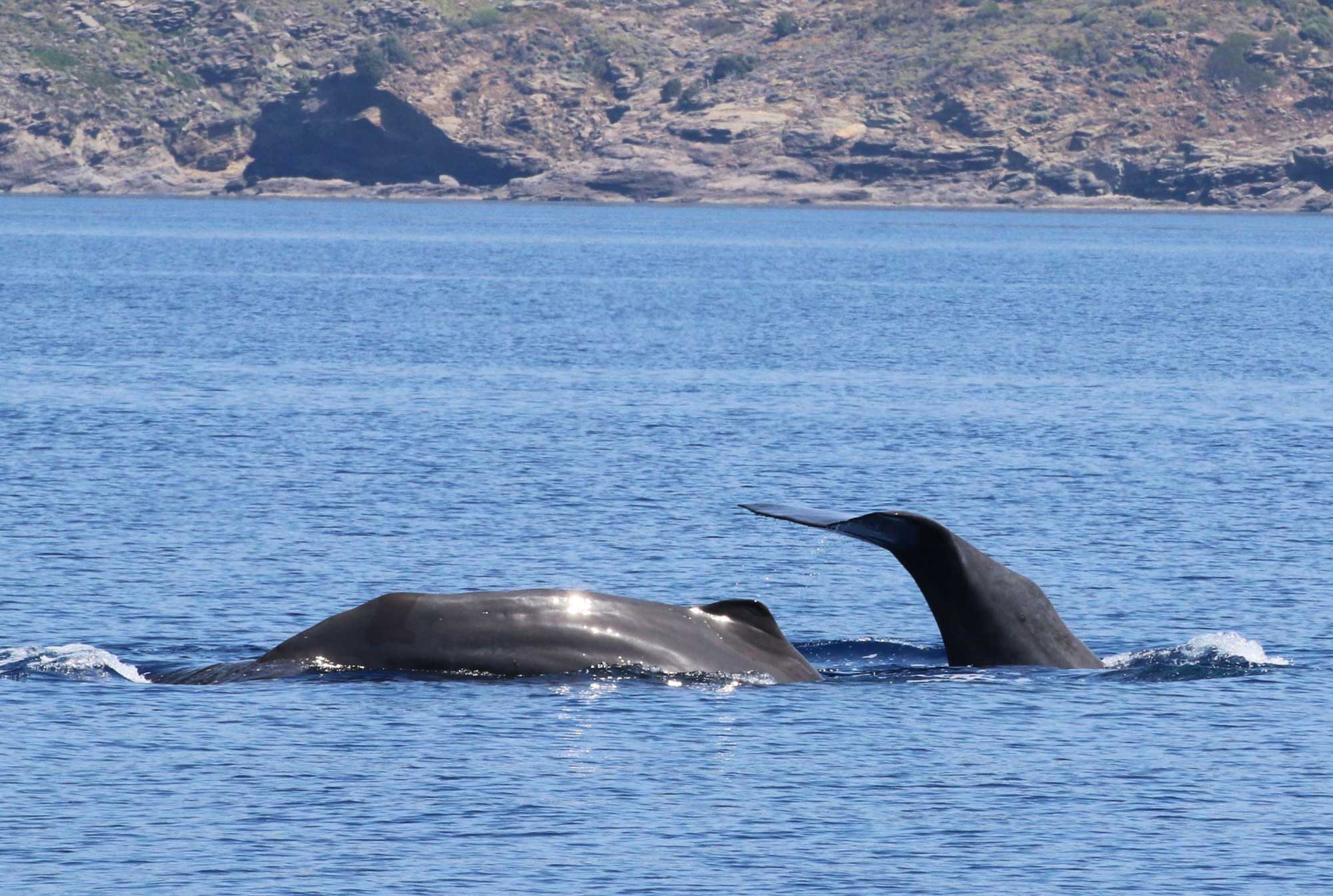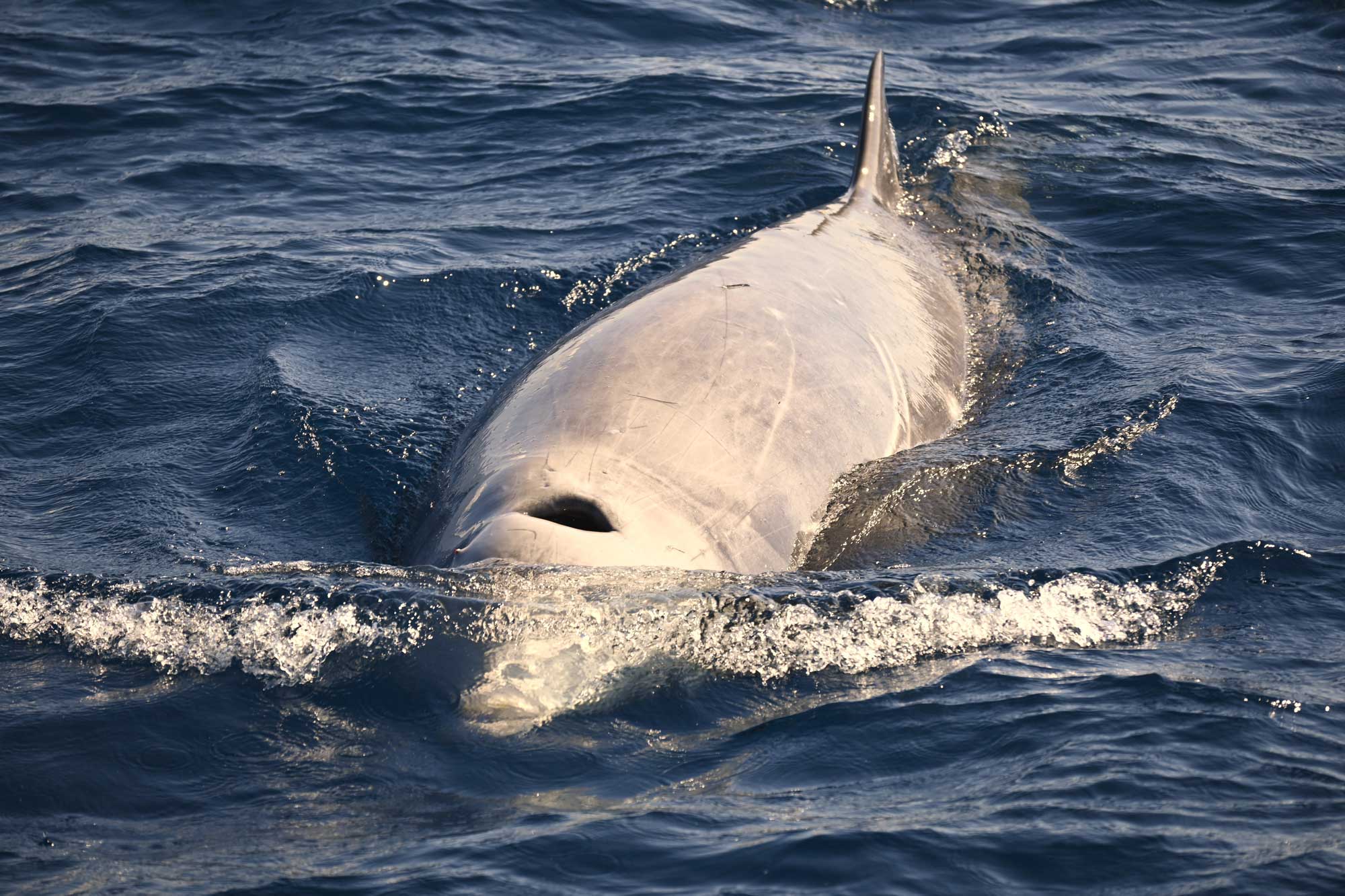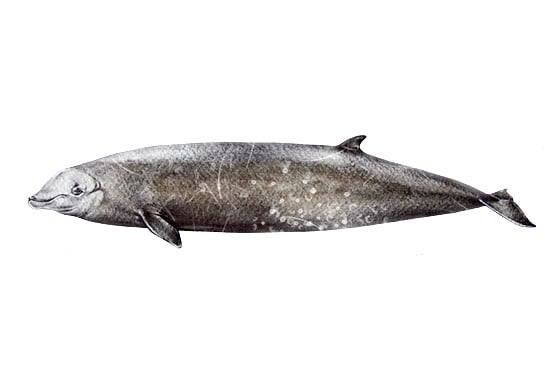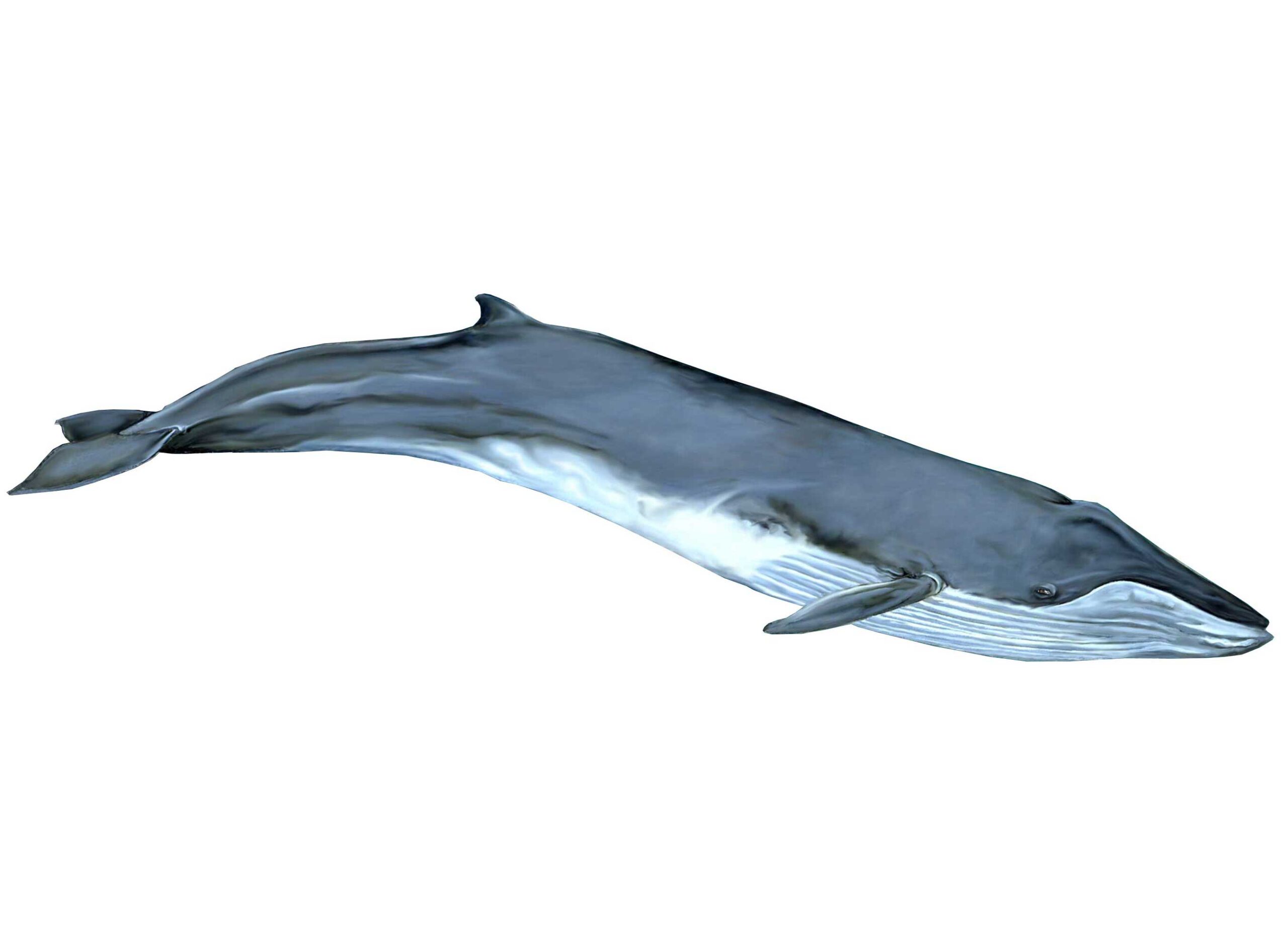- Sperm Whale
- Cuvier’s Beaked Whale
- Fin Whale
Common name
Sperm Whale
Latin name
Physeter macrocephalus
Order
Cetacea
Family
Physeteridae
Life span
>70 years
Social behaviour
Group size is estimated between 3 and 24 individuals. Adult males tend to travel alone or in bachelor schools.
Weight
Up to 80 tons
Length
Up 16m
Population trends
While they are observed globally and are known to have large geographic ranges, very little is known about sperm whale populations, and even less about the population in the Mediterranean.

Distinctive Features
They have large, uniquely square heads with a single blowhole at the front.
Habitat
They are a migratory species, found in pelagic waters, especially along continental slopes.
Interesting fact
Sperm whales are the largest of the toothed whales (odontocetes) and are among the most sexually dimorphic of all cetacean species (adult males tend to be three times larger than adult females).
Main threats
Noise and chemical pollution, by-catch and ship strikes.
Diet
Cephalopods and some demersal fish. When diving for their main food source (cephalopods), sperm whales go between 300 and 3,000 m deep per dive and stay submerged for 20-50 minutes.





All Media © Archipelagos Institute of Marine Conservation
Common name
Cuvier’s Beaked Whale
Latin name
Ziphius cavirostris
Order
Cetacea
Family
Ziphiidae
Life span
Up to 60 years
Social behaviour
Groups of 2 to 5 individuals
Weight
Up to 3000kg
Length
Up to 7m
Population trends
Very little is known about the populations and abundance of Cuvier’s beaked whales in the Mediterranean.

Distinctive Features
They can be identified by their stout body, small sloping head and curved mouth, which gives them a characteristic s-shaped smile.
Habitat
They inhabit pelagic waters, often associated with deep slopes and canyons.
Interesting fact
Cuvier’s beaked whales have the longest and deepest dives recorded of any whale species, 2,992m and 222 minutes respectively.
Main threats
Habitat degradation, noise and chemical pollution. Noise pollution (such as military sonar and seismic exploration) has been most associated with observed mortalities in the Mediterranean. For example, a mass stranding event occurred in the Ionian and Adriatic seas in 2011 coinciding with a military exercise carried out in the area.
Diet
Mostly deep sea cephalopods.




All Media © Archipelagos Institute of Marine Conservation
Common name
Fin Whale
Latin name
Balaenoptera physalus
Order
Cetacea
Family
Balaenopteridae
Life span
>90 years
Social behaviour
Usually considered a solitary animal, social group size is estimated between 2 and 7 individuals.
Weight
Estimated maximum weight of up to 100 tons
Length
Between 13-20m
Population trends
It is the only Mysticeti species in the Mediterranean Sea, regularly observed throughout the western and central basins, but rare in the Aegean area. The population trends remain unknown.

Distinctive Features
They are brownish to dark or light grey dorsally with a white ventral side. Their dorsal fins are located towards the posterior and they have broad and tapered tail flukes.
Habitat
They are a pelagic species who migrate through deep offshore waters, continental slope and shelf waters at depths between 400 and 2,500 m.
Interesting fact
Fin whales are one of the longest cetaceans in the world, second only to the blue whale.
Main threats
Noise and chemical pollution, by-catch and ship strikes.
Diet
Mainly prey on zooplankton as they are a baleen whale species (mysticetes).

All Media © Archipelagos Institute of Marine Conservation


